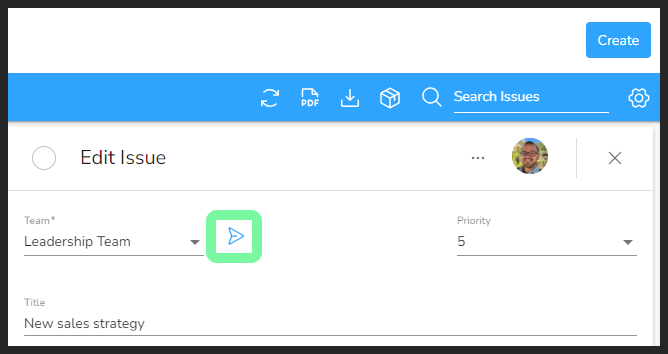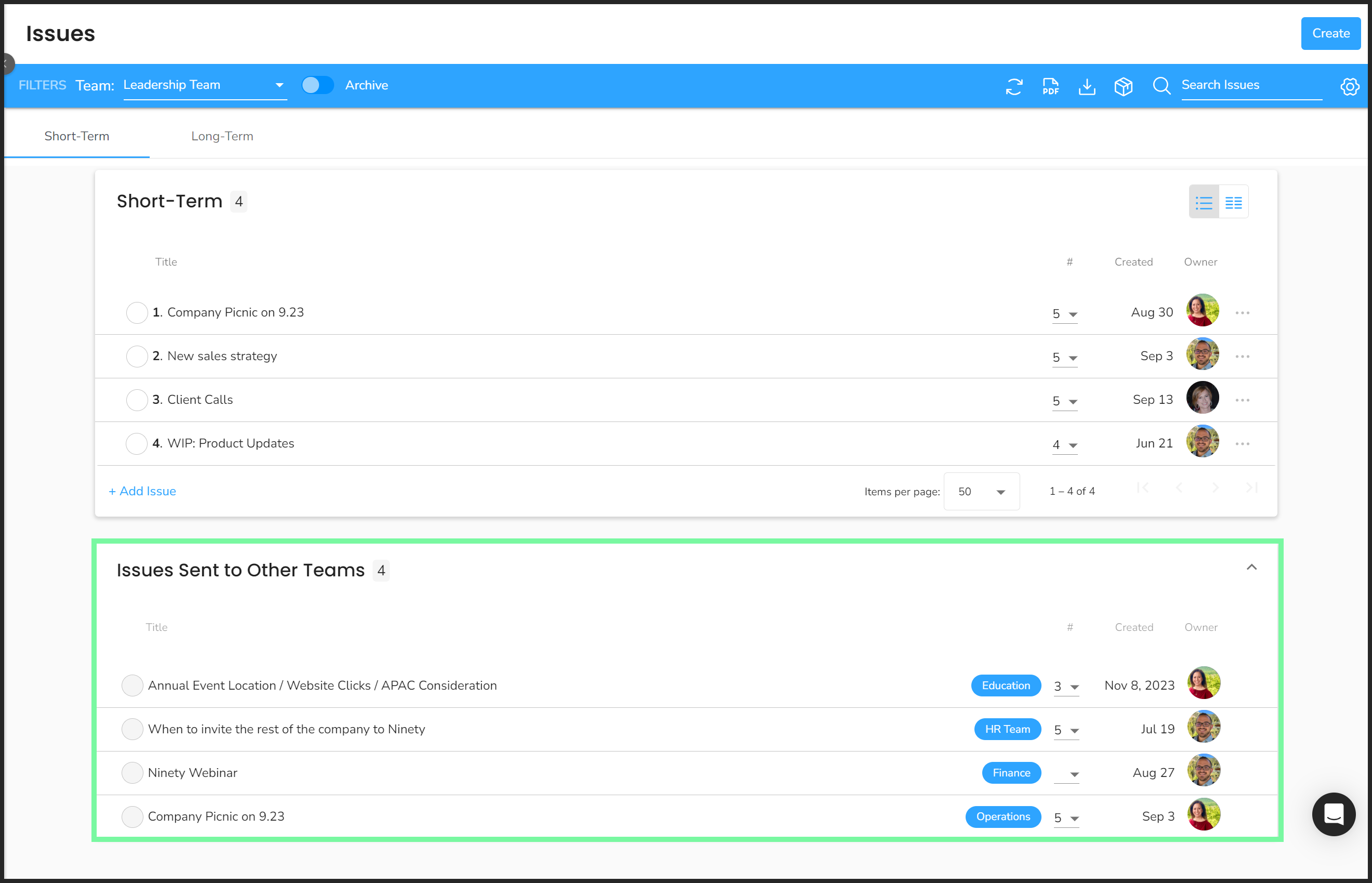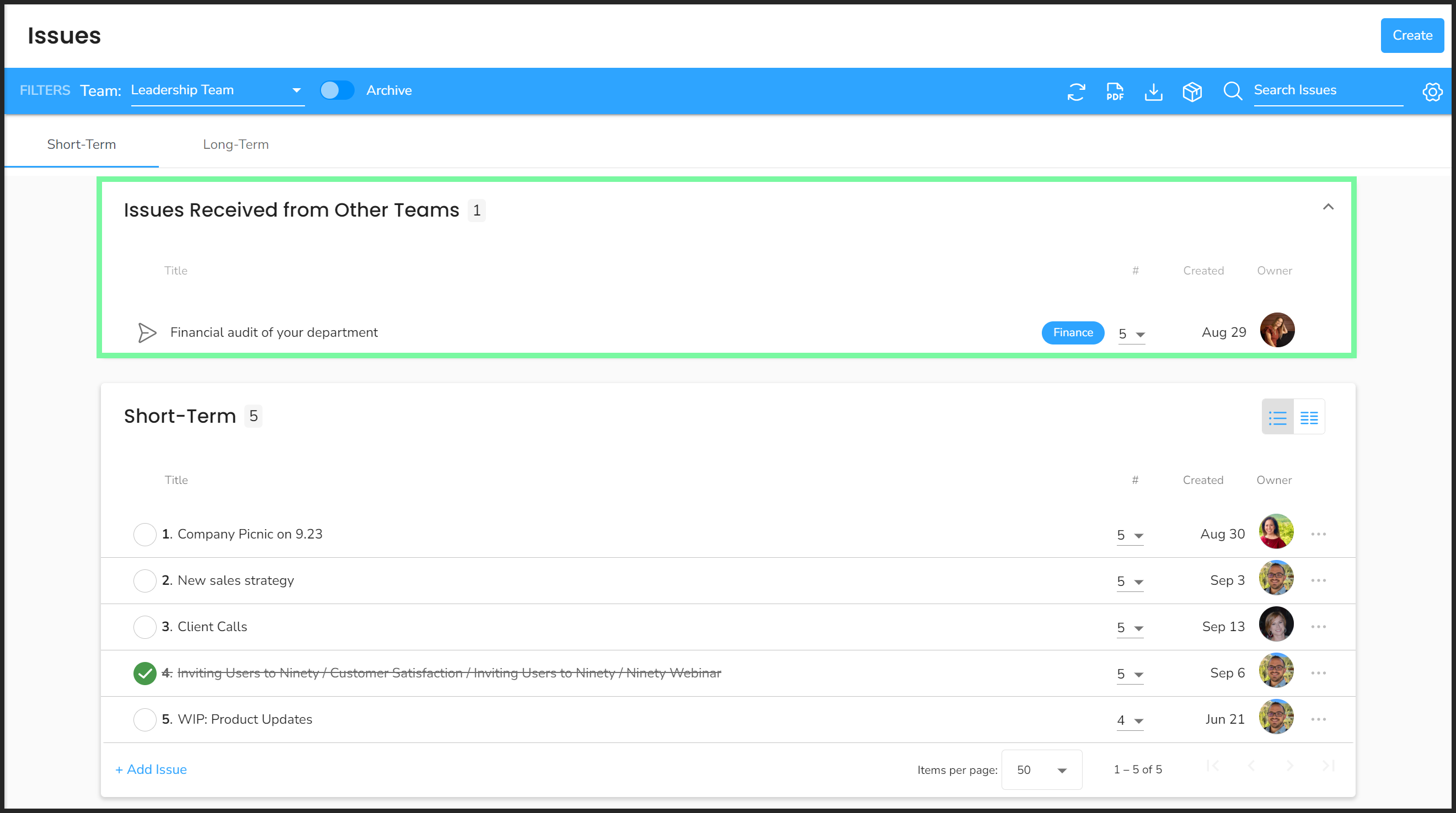Sending or Receiving Issues
Learn how to troubleshoot and resolve common issues with sending and receiving emails.
-
Account Options and Troubleshooting
-
Integrations and Beta
-
Using Ninety with EOS
-
Insights
-
Scorecard
-
Rocks
-
To-Dos
-
Issues
-
Meetings
-
Headlines
-
V/TO
-
Accountability Chart
-
1-on-1
-
People and Toolbox
-
Directory
-
Knowledge Portal
-
Assessments
-
Mobile (beta)
Table of Contents
Sending an Issue
To send an Issue to another team:
- Click an Issue to open its details card.
- Press the arrow by the originating team's name.
- Choose the new team from the popup menu.

Once delegated, the sending team can create To-Dos and update the description, but they cannot solve, archive, or delete the Issue until it is sent back from the receiving team. The receiving team has complete control over the Issue's status until it is sent back to the originating team.
While viewing the list of Issues, teams can see any Issues they have delegated to other teams in a separate section.

Alternatively, all Issues delegated to a team are listed above their Issues.

Receiving teams can update the description field with the steps taken to solve the Issue, then send it back to the originating team. Once returned, the Issue lands back in the originating team's list.

The comments section automatically documents the trading log of the Issue.
Frequently Asked Questions (FAQs)
What's the difference between short- and long-term Issues?
Understanding how our platform differentiates short- and long-term Issues is a great step toward getting the most out of Ninety. The biggest difference between the two is when they go through the IDS®️ process.
Short-term Issues are the problems, obstacles, ideas, or opportunities to discuss and solve as a team during weekly meetings.
Long-term Issues, sometimes called LTIs, are items that don’t have priority this quarter, so you’ll discuss them during your next quarterly or annual meeting. Some of these become Rocks or stay an LTI until your team has the capacity to take it on.